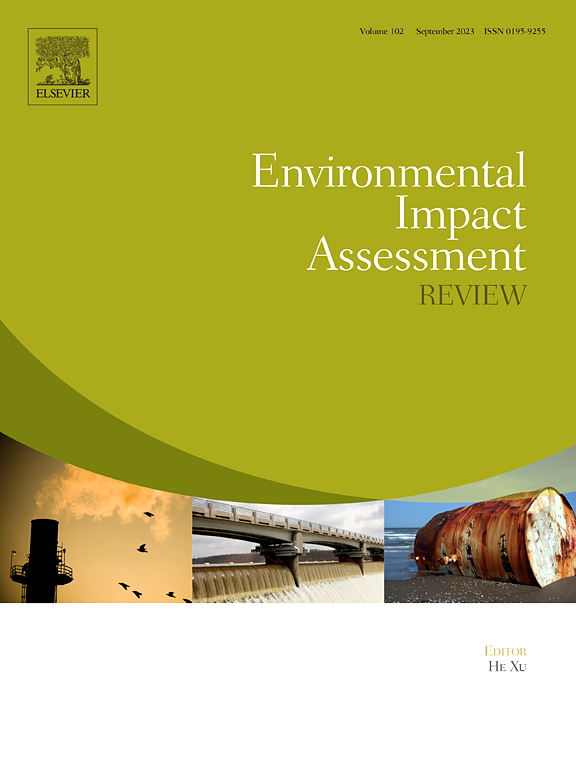住宅建筑设计的多目标优化:通过适应性策略增强可持续性
IF 11.2
1区 社会学
Q1 ENVIRONMENTAL STUDIES
引用次数: 0
摘要
尽管大规模的住宅改造工程一直在强调其效益,但很少有人注意到改造过程的可持续性表现较差,例如成本高、对居民的干扰、利益冲突以及产生过多的噪音和浪费。本研究从适应性策略增强可持续性的角度出发,以三重底线为视角,运用生命周期评估、成本计算和德尔菲法,提出了适应性建筑设计的多目标优化模型。该模型生成的所有帕累托最优解在碳减排和社会绩效提升方面均有显著改善,其中两个解的生命周期成本也低于传统替代方案。这些结果突出了建议框架在平衡三重底线和提高住宅建筑的可持续性方面的有效性。适应性策略,如铝瓦天花板,尽管初始成本较高,但由于易于翻新和可达性,在生命周期碳排放、成本和社会绩效方面优于其他设计策略。敏感性分析表明,建筑物寿命和实际贴现率是影响帕累托前沿的关键因素。本研究的新颖之处在于引入了“为改造而设计”的概念,填补了现有研究在平衡三重底线方面的空白,为未来建筑与城市规划中适应性与可持续性的融合研究提供了新的方向。所提出的优化框架作为评估新住宅设计和现有住宅改造解决方案的可持续性性能的一致基准,无论其原产国如何。本文章由计算机程序翻译,如有差异,请以英文原文为准。
Multi-objective optimization of residential building design: Enhancing sustainability through adaptive strategies
Although large-scale residential renovation works have been deployed with their benefits consistently emphasized, little attention is given to the poor sustainability performance of renovation process, such as high costs, disruption to residents, conflicts of interest, and the generation of excessive noise and waste. From the perspective of enhancing sustainability through adaptive strategies, this study proposes a multi-objective optimization model for adaptive building design through the lens of the triple bottom line, using life cycle assessment, costing and Delphi method. All Pareto optimal solutions generated by the model demonstrate significant improvements in carbon emission reduction and social performance enhancement, with two solutions also achieving lower life cycle costs compared to the conventional alternative. These outcomes highlight the effectiveness of the proposed framework in balancing the triple bottom line and enhancing sustainability in residential buildings. Adaptive strategies, such as aluminum tile ceilings, despite higher initial costs, outperform other design strategies in terms of life cycle carbon emissions, costs and social performance due to ease of renovation and accessibility. Sensitivity analysis reveals that building lifespan and real discount rate are the key factors influencing the Pareto front. The novelty of this study lies in introducing the concept of “design for renovation”, filling the gap of existing research in balancing the triple bottom line and offering a new direction for future research on integrating adaptability and sustainability in architecture and urban planning. The proposed optimization framework serves as a consistent benchmark for assessing the sustainability performance of both new residential designs and existing residential renovation solutions, regardless of their country of origin.
求助全文
通过发布文献求助,成功后即可免费获取论文全文。
去求助
来源期刊

Environmental Impact Assessment Review
ENVIRONMENTAL STUDIES-
CiteScore
12.60
自引率
10.10%
发文量
200
审稿时长
33 days
期刊介绍:
Environmental Impact Assessment Review is an interdisciplinary journal that serves a global audience of practitioners, policymakers, and academics involved in assessing the environmental impact of policies, projects, processes, and products. The journal focuses on innovative theory and practice in environmental impact assessment (EIA). Papers are expected to present innovative ideas, be topical, and coherent. The journal emphasizes concepts, methods, techniques, approaches, and systems related to EIA theory and practice.
 求助内容:
求助内容: 应助结果提醒方式:
应助结果提醒方式:


